
1. What information is provided by motion?
2. What is apparent motion, and what factors affect it?
3. What is the motion correspondence problem, and what may be used to overcome it?
4. What brain pathways handle motion perception?
5. How does the Reichardt motion detector work?
6. How are eye movements taken into consideration, and what is corollary discharge theory?
7. What are some characteristics of biological motion? What is the uncanny valley?
8. How do we perceive motion pictures?
9. What is J.J. Gibson’s ecological approach to perception, and what is the idea of direct perception?
10. What are affordances?
11. Describe the functions of four intraparietal areas.
12 What are mirror neurons, and what are some of their functional properties?
13. How does Ramachandran use mirror neurons to account for technological advances?
1. attracts our _________
2. provides information about the object’s three-dimensional shape
3. provides information that helps us _________ figure from ground
4. provides information that enables us to interact with the environment
A motion ________ experienced when objects in different locations are rapidly presented one after another
Types of apparent motion:
• ____ motion: perception of motion produced by sequential presentation of stationary images; these images appear to move

• ___ motion: perception of motion produced by quickly alternating presentation of stimuli; illusory “shadow” image the same colour as the background appears to move
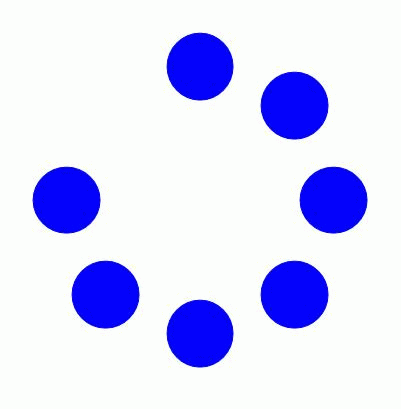
• _______ motion: moving object causes perception of motion in a stationary object
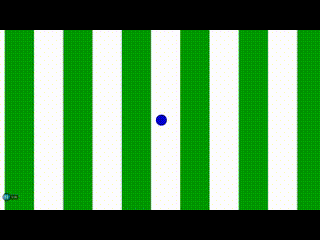
Wertheimer (1912):
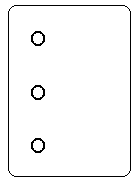
- apparent motion perception depends on timing
- important variable is interstimulus ________ (ISI): time between offset of frame 1 and onset of frame 2:
< 30 ms: simultaneity
60 ms: continuous motion
>200 ms: succession
- but percept also depends on:
• ________ between stimuli
• frame duration
• stimulus onset __________ (SOA)
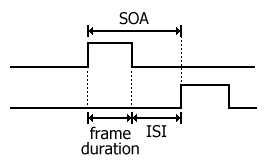
(SOA Law: changes in ISI and frame duration do not affect motion perception unless there is also a change in SOA)
Motion correspondence problem: which elements in frame 1 correspond with which elements in frame 2?
Possible alternatives:

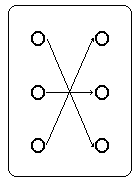
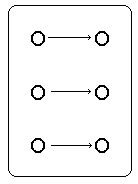
- for N elements, there are N! possible interpretations
Solution: _______-_________ principle (Dawson, 1991): select alternative that minimizes overall “traveling distance” of elements
Problem: what about:
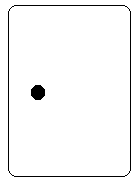
- match is made based on _________; not necessarily shape
- in absence of intensity differences, texture is used
_____ _____ Illusion (Finlay et al., 1984)
- occurs when a rotating spoked wheel is perceived as rotating backwards; often seen in films or on TV
- due to a ___________ between the speed of rotation and the rate of filming (temporal aliasing)
- with small angular displacement (i.e., slow rotation speed), a spoke in one frame is correctly matched to the nearest neighbour (itself) in the next frame
e.g., spoke matched to another at rate of 90 °/frame correctly appears to rotate clockwise


- however, at higher speeds there is greater angular displacement, and the nearest neighbour in the next frame may cause _________________ of rotation direction
e.g., spoke matched to another at rate of 270 °/frame incorrectly appears to rotate counterclockwise


- interestingly, this effect may also obtain in continuous light (not stroboscopically, as on film)
- this may be due to adaptation of certain motion-sensitive neurons as in motion aftereffects
- motion ___________: after adapting to motion in one direction, a stationary object is perceived to be moving in the opposite direction (illusory motion)
• suggests that motion-detecting neurons are wired in opposition to each other
• implies that motion is a ________ aspect of vision
Ramachandran & Gregory (1978): does magno handle motion?
- used ___________ stimuli: contains lines and forms which differ from the background only on the basis of hue
- there are no lightness differences
- stimuli were moved against the background
- difficult to perceive ______
Conclusion: _____ handles motion; parvo not responsible.
Reichardt motion-detector circuit (Werner Reichardt, 1961):
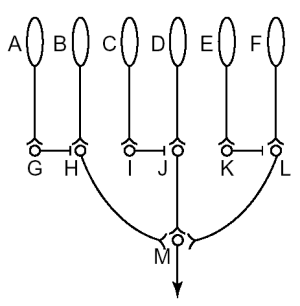
- receptors A-F are pointed at different locations in space
- cells G, I, K inhibit neighbours when motion is to the right
- cells H, J, L pass on activity when motion is to the left
- cell M signals ________ motion
Problems:
![]() following a moving object with your eyes (_______): object is perceived as moving, even though retinal position doesn’t change
following a moving object with your eyes (_______): object is perceived as moving, even though retinal position doesn’t change
![]() sweeping your eyes across a stationary scene (_______)--it appears to remain motionless
sweeping your eyes across a stationary scene (_______)--it appears to remain motionless
Solution: take movement of ____ into account
Corollary discharge theory (Sperry, 1950; von Holst & Mittelstaedt, 1950)
Components:
• image ____________ signal (IDS): detects motion across retina
• motor signal (MS): muscle-movement information sent to eye muscles
• corollary discharge signal (CDS): copy of motor signal
• __________: determines perception of motion; occurs when:
a) IDS present, or
b) CDS present (but not both)
Motion perception with CDS:
1. observing __________ in a dark room
(retinal image stationary, eyes moving)
2. _______ on eyeball but keeping eyes stationary
(muscles push back, causing CDS)
3. pursuit: moving object, eyes move with it
(e.g., tracking a car driving past: no IDS)
4. eyes _________, try to move your eyes (Stevens et al., 1976)
(retinal image stationary, but CDS sent)
Johansson (1973):
- attached 12 light bulbs to joints of a co-worker
- filmed _____ _____ walker in a dark room
- result is clearly identifiable as a person, even after only 200 ms
Can be used:
- to identify _______ couples
- to recognize one’s own walk (or that of friends)
- to determine ___, within 4.4 seconds of viewing
(men have greater shoulder than hip movement; vice-versa for women)
- by cats (to detect other cats)
- even when display is ______ by randomly moving dots (albeit with decreased accuracy)
May be due to _________:
- biological predisposition to recognize humans and animals
- is preferred by infants by 4 months of age (but usually develops between 6-9 months)
- associated with increased activity in superior ________ sulcus (Puce & Perrett, 2003)
The Uncanny Valley (Masahiro Mori, 1970/2012):
- as robots appear more humanlike, their shinwakan (affinity) increases until a valley is reached, in which subtle imperfections create a ___________:
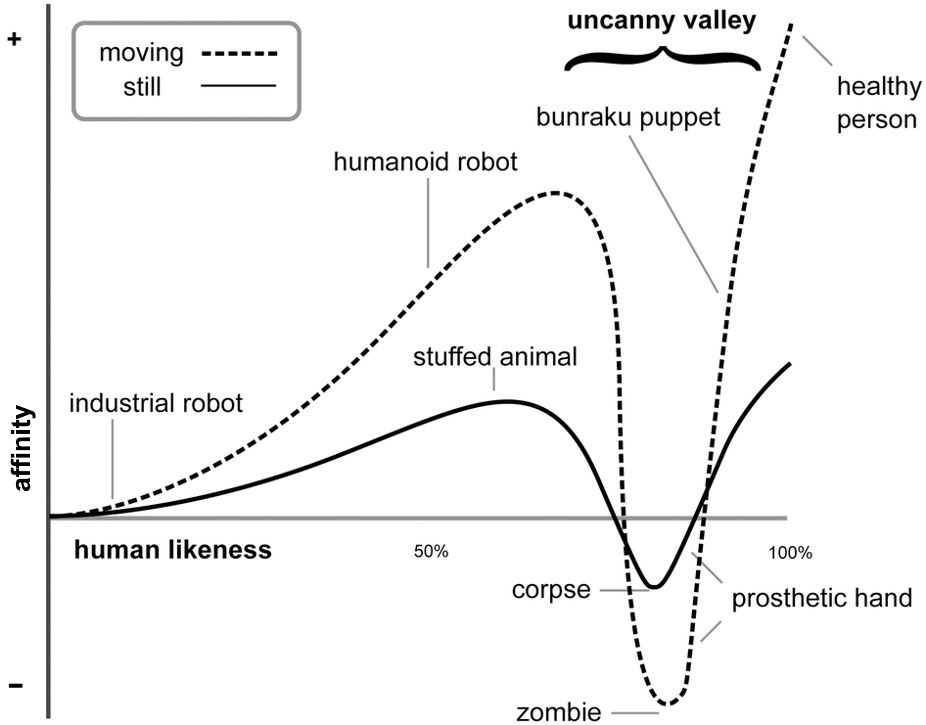
- ______ creates a more intense reaction than a still entity
- implication: robots should not be made into humanlike androids, but should be stylized to avoid entering the uncanny (uncomfortably strange or unfamiliar) valley
- has been applied to “creepy” computer graphics characters in movies and videogames
e.g., CGI Orville Redenbacher; I, Robot movie; Mass Effect: Andromeda videogame
- may be overcome with motion capture (digitally recording movement of a live human), although performance capture (body, hands, and facial expression simultaneously) is not always successful
- Half-Life 2™ game implemented Ekman & Friesen’s (1978) Facial Action Coding System, a taxonomy of facial expressions
Pros & Cons:
![]() may provide framework for making robots/CGI characters more _________
may provide framework for making robots/CGI characters more _________
![]() may contribute to an understanding of ______ interaction
may contribute to an understanding of ______ interaction
![]() shinwakan may be a confounding of strange/familiar and eerie/not eerie (MacDorman, 2006)
shinwakan may be a confounding of strange/familiar and eerie/not eerie (MacDorman, 2006)
![]() criticized as pseudoscientific
criticized as pseudoscientific
![]() evidence equivocal
evidence equivocal
- ___________: first motorized film projector, co-invented by Thomas Edison in 1891
- if film is pulled continuously though the projector, it is seen as a ____
- but if individual frames are presented sequentially, they are perceived as smooth motion
Motion requirements:
1) on-screen image must be _______-____:
- minimum 10 frames per second (fps) → flickering motion
- critical flicker ______: frequency at which a succession of stimuli appear to be on continuously; ~50 fps
- light projected through the shutter, which has rotating blades
- blade covers the period of pulldown; film then stops momentarily
- film projectors show 24 fps with 2 blades → 48 fps

2) slightly _________ frames must be shown in succession
- motion perception not governed by “___________ of vision,” which implies a positive afterimage that would cause frames to bleed together
- persistence would lead to a ________ of successive images, and not necessarily to motion
Braddick (1974) proposed two motion detection systems:
• _____-range: low-level; occurs within small visual angles (15-20'); governs real motion of stimuli
• ____-range: higher-level; occurs in larger visual angles (20'-6°); mechanism for apparent motion
- fine-grained apparent motion over small distances(as in motion pictures) may activate the short-range motion system, and be treated as real motion
• established by J.J. Gibson (b.1904-d.1979)
• assumptions (Gibson, 1966; 1979):
1) ecological approach
- emphasized _________: natural selection has shaped our perceptual system
- considered perception in the natural environment
- understanding ________ of observer is important
2) all info required for perception is available in the environment (bottom-up)
- optic _____ (stimulus pattern in the environment) is highly organized
3) the visual scene is analyzed in terms of whole objects & surfaces, not edges, colours, etc. that comprise objects
- certain characteristics of the environment are _________: a particular relationship holds constant
e.g., a larger object covers up more background than a smaller object, all else being equal
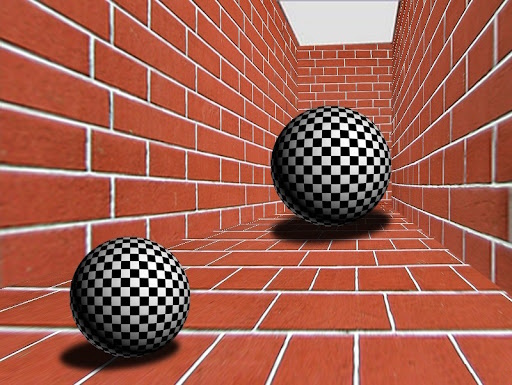
- optic ____: stimulus array changes in a logical way as observer moves through the environment
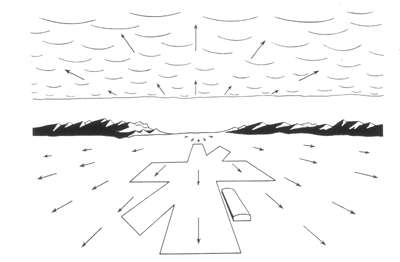
4) perception is ______, immediate
- does not require further computation/mental operations, or additional info based on inferences or experience
- no ___-____ processing
Research example: Lee & Reddish (1976):
- analyzed diving behaviour of gannets
- ___: ratio of target’s retinal size at two different times divided by the rate of change of its retinal size over time (i.e., time to impact)
- note tau is independent of object distance or observer velocity; it is an invariant; based on optic flow
- gannets always retract their wings right before hitting surface of the water, regardless of initial height, indicating sensitivity to time to _________ (tau?)
- Wang & Frost (1992): found neuron in pigeon that fired ~1 second before _________, regardless of object size or velocity
Object perception is functional:
- ___________: actions one can perform with an object
e.g., tree is for climbing, chopping, hugging; not eating
e.g., atmosphere affords visual, auditory, & olfactory perception
Pros & Cons:
![]() identifying invariants adds to _____________
identifying invariants adds to _____________
![]() perceptual __________ exists; is important
perceptual __________ exists; is important
Intraparietal (IP) areas:
• lateral IP: represents location you plan to move your eyes to (saccade planning area)
• medial IP: represents area one can reach to; responds to visual and somatosensory input (parietal reach region)
• ventral IP: responds to moving nearby visual input/tactile input to face; important for feeding behaviour
• ________ IP: represents important shape information for grasping objects; located between sensory and motor areas
- contains neurons that respond to visual stimuli and physical action
- types of AIP neurons:
• _____-dominant: respond when action performed in the dark or in the light--but not to seeing visual cue
• ______-dominant: respond when action performed in the light--but not in the dark
• visual and motor: respond to action in the light, and to a lesser degree to action in the dark, or to visual cue alone
- nearby neurons (in intraparietal sulcus) implicated in cognitive functions that require ___________ of sensory and motor information (e.g., movement planning, spatial attention, and decision-making)
- sends projections to premotor cortex and then to motor cortex
Giacomo Rizzolatti & colleagues (1992, 1996a, 1996b):
(shared Grawemeyer Award in Psychology in 2007)
- probed premotor cortex (area F5) in brain of macaque monkeys
- neurons responded when monkeys grasped a piece of food
- by coincidence, one researcher reached for a ______, and some of the neurons reacted
- ______ _______ (MNs): activated when a goal-directed action is performed, and when a similar action is observed
- found for grasping, manipulating, or placing objects
Features of mirror neurons (Miller, 2005):
• require __________ motion: no response if object picked up with pliers
• seems to be an execution-observation ________ system
e.g., mirror neurons active as novice guitarists watched a professional play chords
• no response when action observed without object
• no response to mere visual presentation of objects
• audio-visual mirror neurons can be triggered by visual information and by the sound of a particular action
e.g., ripping paper
• MNs may infer the ____ of an observed action:
- monkey watched food placed behind a screen
- model reached for food
- final part of action sequence hidden from sight
- mirror neuron activated
• MN activation dependent on understanding intentions; intentions transcend the context of an action; they require comprehension of the “_________”
e.g., is hand moving to pick up a teacup to drink, or to clear off the table?
Mirror neurons in humans:
• Ramachandran and Rogers-Ramachandran (1996):
- patients with a right-hemisphere stroke have paralysis of the left side of their body
- about 5% of patients deny their paralysis (“denial syndrome”, or ___________)-- and that of other patients, too
- strongly implies mirror neuron system in humans
• some evidence suggests _______ area (speech production) in humans is comparable to F5 in monkeys
• activation found in areas of human premotor cortex when:
- reading a literal phrase
e.g., “biting the peach” or “grasping a pen”
- watching a video of fruit being bitten or a pen being grasped
- but not by a ____________ phrase
e.g., “biting off more than you can chew” or “grasping the idea”
Saygin et al. (2012): biological motion
- fMRI brain scans taken of observers watching videos of recognizable actions by:
• a robot ____________
• an android
• a human
- less activity in anterior intraparietal sulcus when viewing robot endoskeleton
- activity may be due to mirror neuron system
- similar result obtained by Ramachandran and colleagues (2006) using EEG
Sandini and colleagues (2007, 2019):
- developed the open-source iCub cognitive humanoid robot, which has visual, vestibular, auditory, and haptic sensory capabilities
- applied mirror neurons: iCub can learn to perform actions by watching humans (_____________ learning)
Further questions (Nakahara & Miyashita, 2005):
- do mirror neurons explain understanding of action and intention, _________, and shared attention?
- what other regions modulate mirror neurons?
- _________________ evidence: if mirror neurons are disrupted, are there deficits in understanding actions?
- does a mirror neuron system underlie language, or theory of mind?
• theory of mind: cognitive capacity to understand that ______ have beliefs, desires and intentions different from one’s own; and the ability to form a theory as to these mental states (Premack & Woodruff, 1978)
• tested via the Sally-Anne test, a “skit” shown to participants (Baron-Cohen & colleagues, 1985):
▸ two dolls: Sally has a basket, Anne has a box
▸ Sally puts a ball in her basket and leaves
▸ Anne takes the ball and puts it into her box
▸ Sally returns; participants asked where Sally will look for her ball
▸ results:
group |
mean age (years;months) |
% correct |
neurotypical |
4;5 |
85 |
Down’s |
10;11 |
86 |
autism |
11;11 |
__ |
• a systematic review, however, concluded that theory of mind can be taught to those on the autism spectrum (Fletcher-Watson et al., 2014)
• research does not support the “______-______ theory” of autism (Heyes & Catmur, 2022)
- what role have mirror neurons played in _________? (V.S. Ramachandran, 2000):
• some questions about evolution and the brain:
1) Hominid brain reached nearly its present size 250,000 years ago
But why did many human attributes (tool use, fire, art, music, language) emerge much _____?
2) Crude Oldowan tools emerged 2.4M years ago; better symmetrical tools emerged 1.4M years ago; sophisticated bifacial tools with a handle emerged only 200,000 years ago
Why did these _____________ changes appear suddenly?
3) Why did the “Big Bang” of evolution or “_____ ____” in technological sophistication (cave art, clothes, dwellings) happen suddenly about 40,000 years ago?
4) Did language suddenly appear, or did it come from a more primitive ________ language?
5) Why are humans the “Machiavellian primate,” able to “read minds” to _______ others’ behaviours?
• these changes are not due simply to increases in _____ size, or unaccounted evolutionary changes
• MNs may account for rapid spread of innovations (“see one, do one, teach one”)
• MNs may simply have become activated by environmental triggers, causing the so-called big bang; perhaps due to an increase in “____________”
• MNs are necessary, but not sufficient for advances to occur (also require things like _______, etc.)
• “...mirror neurons will do for psychology what ___ did for biology...”